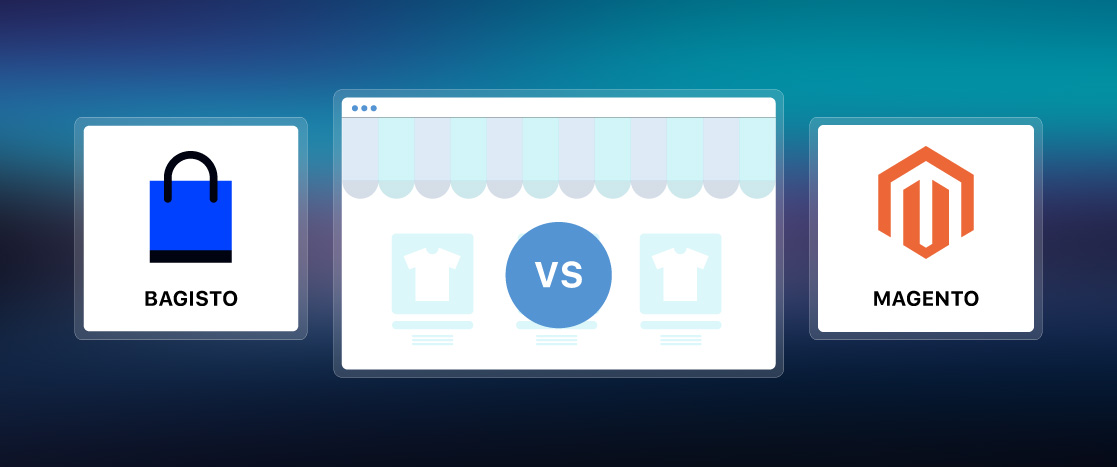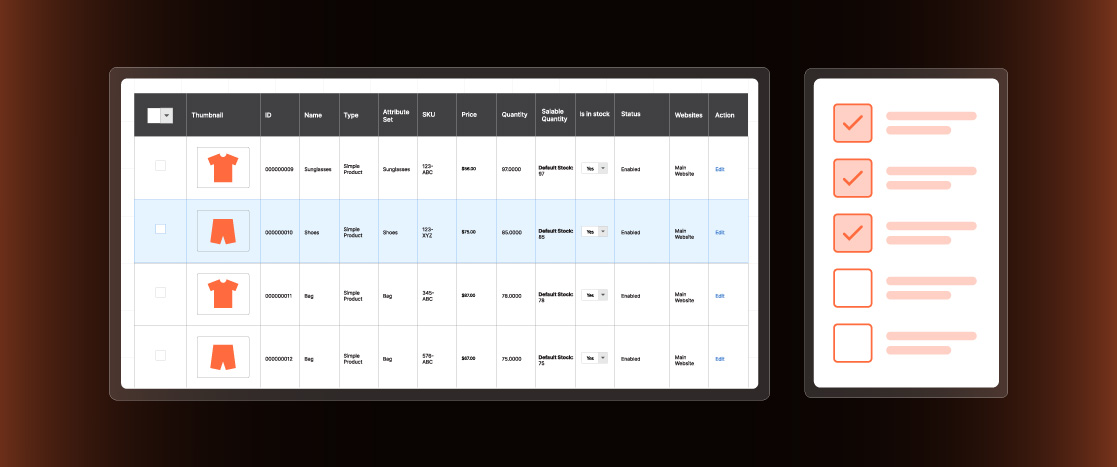
Magento Dropshipping Guide 2024
In today’s fast-growing ecommerce landscape, businesses constantly seek innovative ways to streamline operations, minimize overhead costs, and maximize profitability. One strategy that has gained popularity is dropshipping, a fulfillment model that allows online retailers to sell products without maintaining physical inventory. Magento is one of the leading open-source ecommerce platforms that has appeared as a powerful solution for entrepreneurs seeking to leverage the benefits of dropshipping.
Dropshipping with Magento offers businesses a unique opportunity to expand their product offerings, reduce upfront investment, and minimize storage and shipping complexities. By partnering with reliable suppliers, online retailers can curate a diverse range of products while delegating inventory management responsibilities and order fulfillment to their dropshipping partners.
This comprehensive guide will focus on setting up a successful Magento dropshipping business in 2024. Whether you’re an experienced ecommerce businessman or a beginner entrepreneur, this step-by-step approach will provide the necessary insights and actionable strategies to navigate the world of Magento dropshipping seamlessly. From selecting suitable suppliers and integrating with Magento extensions to optimizing your online store for conversions and ensuring a seamless customer experience, this guide will provide you with the tools to grow in the dynamic ecommerce landscape.
What is Magento Dropshipping?
Magento dropshipping is a business model allowing online retailers to sell products through their Magento-powered eCommerce store without physically housing or shipping the inventory. In this approach, the store owner acts as an intermediary between the customer and the supplier, leveraging the power of the Magento platform to simplify the operation. The process works as follows:
- A customer visits the online store and places an order for a product.
- The store owner receives the order details through their Magento store and forwards the order information to a third-party dropshipping supplier.
- The dropshipping supplier, who maintains the physical inventory, processes the order by picking, packing, and shipping the product directly to the customer’s address.
- The customer receives the product, and the store owner handles any customer service inquiries, returns, or exchanges, if necessary.
Magento dropshipping eliminates the need for the store owner to maintain a physical inventory or handle the logistics of product fulfillment. Instead, they can focus on curating a diverse product catalog, marketing their online store, and providing exceptional customer service. At the same time, the dropshipping supplier manages the inventory and shipping aspects of the business.
Benefits and Drawbacks of Magento Dropshipping
Embracing the Magento dropshipping model offers online retailers many advantages, making it an attractive choice for businesses seeking to streamline operations and maximize profitability. However, like any business strategy, weighing both the potential benefits and drawbacks is essential to make an informed decision.
Benefits of Magento Dropshipping
- Low Overhead Costs: One of the most fascinating advantages of Magento dropshipping is the minimal overhead expenses involved. By eliminating the need for physical inventory storage and order fulfillment operations, businesses can significantly reduce warehousing, inventory management, and shipping logistics costs.
- Scalability and Product Diversity: With dropshipping, online retailers can offer a vast range of products without physical space limitations. This versatility allows businesses to cater to niche markets efficiently, experiment with new product lines, and adapt to evolving consumer trends.
- Reduced Risk: Magento dropshipping moderates the financial risks associated with traditional retail models. Since there is no upfront investment in inventory, businesses can test new products and gauge market demand without the burden of unsold stock or outdated merchandise.
- Geographical Expansion: By partnering with strategically located dropshipping suppliers, online retailers can extend their reach and deliver products to customers across various regions or internationally without the logistical challenges of managing cross-border shipping operations.
Drawbacks of Magento Dropshipping
- Limited Control over Product Quality: When outsourcing order fulfillment to third-party suppliers, online retailers may have less control over product quality, packaging, and shipping processes, potentially impacting the overall customer experience.
- Supplier Reliability: Establishing and maintaining partnerships with reliable and reputable dropshipping suppliers can be challenging. Inspecting potential suppliers and monitoring their performance ensures consistent, high-quality service.
- Less Profit Margins: In a highly competitive eCommerce landscape, online retailers may face pressure to offer competitive pricing, leading to lesser profit margins, especially when selling commoditized products or popular items with intense competition.
- Customer Service Challenges: While dropshipping relieves businesses of order fulfillment responsibilities, retailers still bear the burden of providing excellent customer service, handling returns and exchanges, and addressing any issues that may arise during the order process.
By carefully evaluating these benefits and drawbacks, online retailers can decide whether the Magento dropshipping model aligns with their business goals, operational capabilities, and long-term growth strategies.
Why Choose Magento for Dropshipping?
Magento appears as an excellent choice for building a dropshipping business due to several key advantages it offers over other eCommerce platforms like BigCommerce or Shopify:
- No Commission Fees: One of the most significant benefits of using Magento is the absence of commission fees charged on orders. Many other eCommerce solutions take a percentage cut from each transaction, which can significantly eat into profit margins, especially for dropshipping businesses operating on lower margins. With Magento, you keep 100% of your revenue.
- Self-Hosted Data: Magento allows you to control your data fully by providing a self-hosted solution. Your customer information, order details, and other sensitive data reside on your servers rather than being stored by a third-party platform provider. This ensures data privacy and compliance.
- No Hidden/Extra Charges: Unlike some eCommerce platforms with add-on costs for advanced features or higher usage limits, Magento has no hidden or extra charges. The open-source nature makes it a transparent solution without additional fees.
- No Limitation on Order Volume: With Magento, your dropshipping business can scale without artificial constraints. The number of orders you can process is not limited, allowing your operation to grow seamlessly as sales increase.
Steps to set up Magento Dropshipping
Get your Magento application and log in to the admin dashboard. Once you have your Magento application, follow these steps to set up dropshipping on the Magento platform.
Select Your Niche and Products
- Determine products resonating with your interests/values and customer demand.
- Research using tools like Google Trends, social media, and reviews to identify popular/in-demand products.
- Target products with demand but not oversaturated.
Identify Reliable Suppliers
- Register business structure (sole proprietorship, LLC, etc.)
- Obtain necessary licenses/permits
- Understand taxes and customs for locations you’ll sell in
- Register trademark brand, get insurance, and create Terms of Service
Choose Extensions/Tools
- Create a list of trustworthy suppliers with details on shipping, policies, quality, etc.
- Use platforms like AliExpress, SaleHoo.
- Place test orders.
Establish Business/Legal Requirements
- Explore Adobe Commerce Marketplace for dropshipping extensions
- Consider free vs paid, features, reviews
Configure Store
- Set up shipping methods aligned with supplier rates
- Configure payment gateways
- Develop order processing system if not automated
- Optimize checkout process
Leverage Inventory Management
- Sync with suppliers for real-time inventory updates
- Set back order, stock notification settings
- Use reporting tools for demand forecasting
Automate Order Processing/Tracking
- Integrate via APIs for direct data transfer
- Automate order export, status notifications, and tracking updates
- Enable order splitting by supplier
Maintain Product/Pricing Updates
- Keep product info pricing in sync with suppliers
- Schedule updates during low-traffic periods
- Use data transfer extensions for file imports
Utilize Helpful Tools/Resources
- DSers, Mageplaza, XTENTO, Amasty for automation
- Community forums, documentation, courses for support
FAQs about Magento Dropshipping
Here are short answers to the frequently asked questions:
What is the Magento 2 backend?
The Magento 2 backend refers to the administrative and management components of the platform, including the Magento admin panel. This provides tools and features for managing products, orders, customers, content, and other e-commerce-related functionalities.
Can I start dropshipping with $100?
It’s possible but challenging with a minimal budget of $100. You must leverage free or low-cost platforms, extensions, and marketing strategies.
How to drop ship with no money?
Choose a profitable niche, partner with reliable suppliers, offer competitive pricing, invest in marketing and branding, provide excellent customer service, analyze data, and adapt strategies continuously.
Conclusion
In conclusion, setting up a Magento dropshipping business in 2024 offers online retailers an exciting opportunity to streamline operations, reduce overhead costs, and tap into broader markets. You can establish a successful dropshipping business on the robust Magento platform by following the steps outlined in this guide – from selecting niche and reliable suppliers to configuring your store, automating processes, and leveraging helpful tools.
While dropshipping has challenges like managing supplier relationships, the potential benefits of scalability, reduced risk, and geographical reach make it an attractive model. Stay adaptable, prioritize exceptional customer service, and continuously refine your strategies to thrive in the dynamic eCommerce world. Embrace Magento dropshipping and unlock new paths for growth and profitability in 2024 and beyond.





